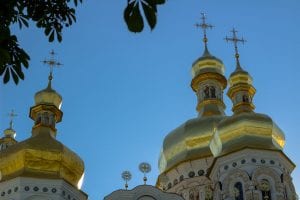Christian Orthodox Funeral Service Rituals
A split between the Orthodox Church and the Roman Catholic Church, known as the Great Schism, divided the Church in 1054 A.D. Today, divisions of the Orthodox Church include the Antiochian, Carpatho-Russian, Greek, Romanian, Russian, Serbian, and Ukrainian Orthodox Churches which follow the languages and cultures of their founders. Although many Orthodox beliefs remain the same, the defining principle of Orthodoxy is the belief that the teachings of Jesus and the twelve apostles represent truth.
Orthodoxy regards death as the separation of the soul from the body. The soul first undergoes partial judgment, where behavior and character during life determine the final resting place, Heaven or Hell. After Jesus Christ returns to the earth and His kingdom is established, the final judgment will occur. Even though the church prays for the deceased’s soul, great respect is paid to the body. The Christian’s body is considered sacred because it was the Temple of the Holy Spirit. Plus, the body shares in the final restoration of all creation.
While there are a number of variations, the Orthodox funeral generally consists of three Services. The first is the vigil service, or the Trisagion, which is usually performed at the church the night before the funeral day and on anniversaries of the person’s death. If the family wishes, the Trisagion may be performed at a funeral home. In the service, the prayers entreat God to grant rest to the departed soul so that it may receive mercy. The name of the service, “Trisagion,” comes from the repetition three times of the opening phrase of the service, “Holy God, Holy Mighty, Holy and Immortal, have mercy on us.” The service also includes this liturgy, asking Christ to “give rest with the Saints to the soul of Your servant where there is neither pain, grief, nor sighing but life everlasting.”
The Funeral Service is continued at the Church, where the body is brought on the day of burial. The Divine Liturgy may be celebrated. After the funeral service, members of the congregation offer their farewell to the deceased. The Trisaghion Service is repeated at the graveside. Following the funeral service, the mourners share a meal to celebrate the life of the one who died. The meal is a chance for the relatives and friends to remember their loved one in an informal setting.
The Memorial Service is repeated, either at the church or at the grave throughout the first year: usually at the fortieth day (i.e., the official mourning period) and at the one year anniversary.
Etiquette for Mourners at Christian Orthodox Funerals
When one dies, friends of the deceased can call or visit the family prior to the funeral to offer condolences and memories of the deceased. The family may be greeted with the phrase “May his [or her] memory be eternal.” The funeral service is held at either a funeral home or the church of the deceased with open casket, although viewing is optional. When viewing the body, Christians may kiss the cross or icon resting on the casket. If Communion is presented, guests who are not Orthodox should not participate, but other traditions are open to everyone. When visiting the graveside, a single flower is placed on the casket.
The traditional posture for prayer and worship in the Orthodox Church is to stand. In the Orthodox “old countries”, there are usually no pews in the churches. Chairs or benches on the side walls are usually reserved for the elderly and infirm. In North America, many churches have pews, and non-Orthodox visitors must pay attention to determine when to sit and stand. In particular, it is very important to stand during the Gospel reading, the entrances of the priests, the distribution of Holy Communion, when the priest gives a blessing, and the dismissal at the conclusion of the service. Also, it is acceptable to stand for the entire service.
